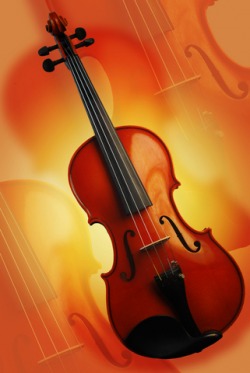How Your Music Can Touch the Soul

How do you successfully influence the audience's meditative state? Raga alapana or Alaap is an effective technique for help the audience fall into the state of meditation and thoughtless awareness. Loud, exciting music usually doesn't help us achieve the meditative state.
The use of rhythm in aiding spiritual enlightenment, and as an aid to energy awakening, is quite interesting and requires careful study. A nice lilting, distinctive rhythm aids the energy awakening process; however, excessive focus on rhythm and loud percussion instruments can shift the audience's attention from devotion and inner calm to a different territory: excitement and mental stimulation that's not conducive to meditation.
I’ve seen scores of musicians attempt to use the thrill of rhythm and a catchy drumbeat or other percussion to captivate the audience, who then starts to dance along. Everyone enjoys this, and it's easy for them to feel excited and euphoric and believe that they have achieved some higher spiritual state. While there may be rare instances where the audience and the musician fall into the absolutely perfect rhythm that vibrates immensely with the energy centers, excitement usually works against the true experience of spiritual enlightenment. And separating the feeling of raw excitement from true joy can be difficult. It's easy for anyone to feel excited and happy and believe that they are dancing out of joy. They aren’t. The real joy and the feeling of bliss should produce an inner calm and tranquility.
Both audience and musician must assess their predominant emotions and feelings during the performance to determine whether they have truly received enlightenment.
The final — and most difficult — aspects for a musician to focus on are the qualities of his / her own energy centers. One school of thought holds that musicians are creations of the Divine and instruments of spirituality, therefore, their personal qualities, habits and traits should be set aside or ignored when they begin to act as instruments. As long as their music is pure, as well as their desire to provide spiritual enlightenment, their own character or personal qualities are irrelevant. While this is certainly true, I’ve personally found that developing the core qualities associated with each of the energy centers can be a powerful aid when you're using music for spiritual purposes. There have been times when I struggled to penetrate the Agnya chakra or the heaviness in that energy center with audiences and wished that I had been more clear on that energy center myself.
Take this with a grain of salt. If you're musician, you can experiment before drawing any conclusions. I would certainly encourage musicians to be as clear as possible on their energy centers, especially during music concerts or other programs. Emotions are conveyed through music, and if you're filled with positive emotions, that will likely be transmitted through your rendering. And the audience's enjoyment will be far greater.
Next Article
More Spiritual Musicopedia Articles
The use of rhythm in aiding spiritual enlightenment, and as an aid to energy awakening, is quite interesting and requires careful study. A nice lilting, distinctive rhythm aids the energy awakening process; however, excessive focus on rhythm and loud percussion instruments can shift the audience's attention from devotion and inner calm to a different territory: excitement and mental stimulation that's not conducive to meditation.
I’ve seen scores of musicians attempt to use the thrill of rhythm and a catchy drumbeat or other percussion to captivate the audience, who then starts to dance along. Everyone enjoys this, and it's easy for them to feel excited and euphoric and believe that they have achieved some higher spiritual state. While there may be rare instances where the audience and the musician fall into the absolutely perfect rhythm that vibrates immensely with the energy centers, excitement usually works against the true experience of spiritual enlightenment. And separating the feeling of raw excitement from true joy can be difficult. It's easy for anyone to feel excited and happy and believe that they are dancing out of joy. They aren’t. The real joy and the feeling of bliss should produce an inner calm and tranquility.
Both audience and musician must assess their predominant emotions and feelings during the performance to determine whether they have truly received enlightenment.
The final — and most difficult — aspects for a musician to focus on are the qualities of his / her own energy centers. One school of thought holds that musicians are creations of the Divine and instruments of spirituality, therefore, their personal qualities, habits and traits should be set aside or ignored when they begin to act as instruments. As long as their music is pure, as well as their desire to provide spiritual enlightenment, their own character or personal qualities are irrelevant. While this is certainly true, I’ve personally found that developing the core qualities associated with each of the energy centers can be a powerful aid when you're using music for spiritual purposes. There have been times when I struggled to penetrate the Agnya chakra or the heaviness in that energy center with audiences and wished that I had been more clear on that energy center myself.
Take this with a grain of salt. If you're musician, you can experiment before drawing any conclusions. I would certainly encourage musicians to be as clear as possible on their energy centers, especially during music concerts or other programs. Emotions are conveyed through music, and if you're filled with positive emotions, that will likely be transmitted through your rendering. And the audience's enjoyment will be far greater.
Next Article
More Spiritual Musicopedia Articles
